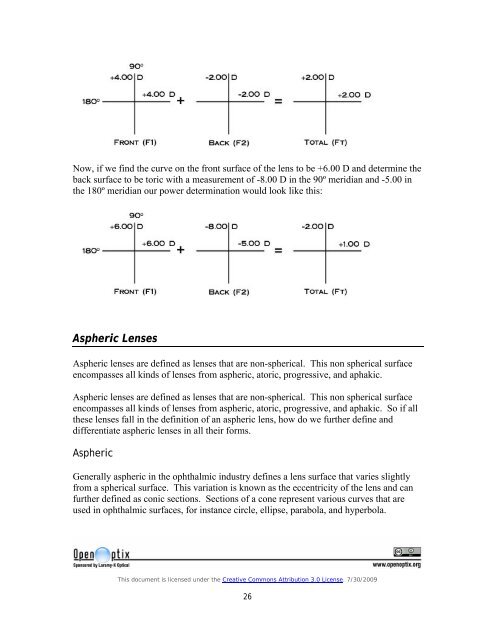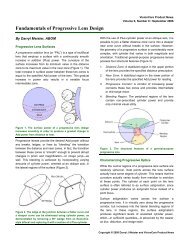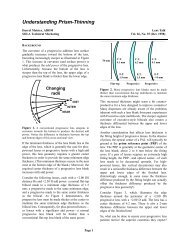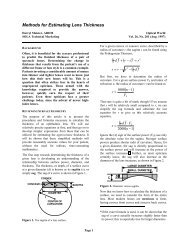OpenOptix ABO Study Guide - Laramy-K Optical
OpenOptix ABO Study Guide - Laramy-K Optical
OpenOptix ABO Study Guide - Laramy-K Optical
Create successful ePaper yourself
Turn your PDF publications into a flip-book with our unique Google optimized e-Paper software.
Now, if we find the curve on the front surface of the lens to be +6.00 D and determine the<br />
back surface to be toric with a measurement of -8.00 D in the 90º meridian and -5.00 in<br />
the 180º meridian our power determination would look like this:<br />
Aspheric Lenses<br />
Aspheric lenses are defined as lenses that are non-spherical. This non spherical surface<br />
encompasses all kinds of lenses from aspheric, atoric, progressive, and aphakic.<br />
Aspheric lenses are defined as lenses that are non-spherical. This non spherical surface<br />
encompasses all kinds of lenses from aspheric, atoric, progressive, and aphakic. So if all<br />
these lenses fall in the definition of an aspheric lens, how do we further define and<br />
differentiate aspheric lenses in all their forms.<br />
Aspheric<br />
Generally aspheric in the ophthalmic industry defines a lens surface that varies slightly<br />
from a spherical surface. This variation is known as the eccentricity of the lens and can<br />
further defined as conic sections. Sections of a cone represent various curves that are<br />
used in ophthalmic surfaces, for instance circle, ellipse, parabola, and hyperbola.<br />
This document is licensed under the Creative Commons Attribution 3.0 License. 7/30/2009<br />
26









